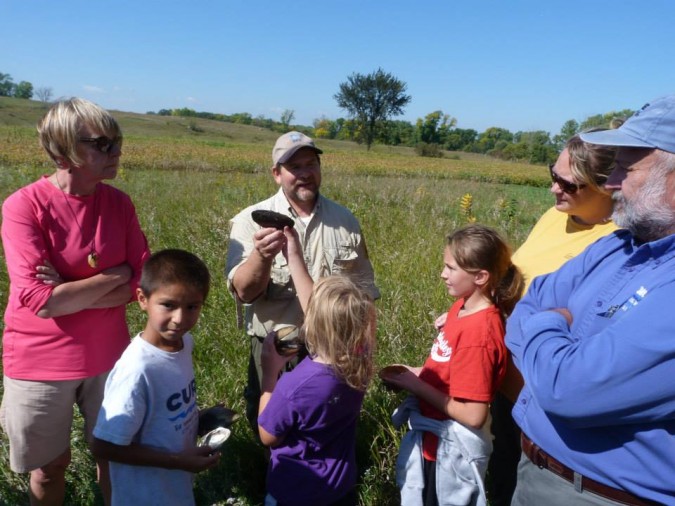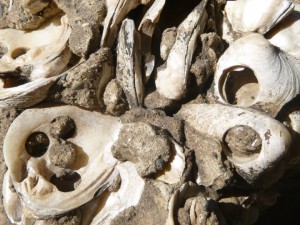
On Saturday, September 20th, a group of 16 CURE members and supporters discovered that freshwater mussels are animals with a fascinating life cycle. Representatives of the new generation of up-and-coming river enthusiasts (half a dozen young children) were also among those that met along the Pomme de Terre River in Appleton with Bernard Sietman from the MN Department of Natural Resources.
Although this year’s continued high water hampered the group’s ability to get their feet wet and search the river bottom for mussels, it did not dampen their interest. Bernard and a couple of the participants braved the higher flows and cool waters to enter the river near a riffle and search for mussels or relic shells to share with the group. They emerged from the river with a variety of shells that included elktoe, black sandshell, fatmucket, and Wabash pigtoe. The Pomme de Terre River is one of the only tributaries of the Minnesota River that still supports live populations of elktoe mussels.

Bernard spoke to the group about the history of mussels, their life cycle, and answered the many questions posed by the group. In the early 1900’s there was quite a large button industry centered around harvesting mussels to punch buttons out of their shells and also a large freshwater pearl industry. Both of these industries along with degradation of habitat (sedimentation and pollutants) contributed to the depletion in the abundance of mussels in our rivers.
Bernard and his team work on surveying and inventorying mussels in the rivers and lakes in the state of Minnesota. In addition, they propagate mussels in their lab and work on repopulation of certain species in some rivers of the state. The Minnesota DNR is likely one of the top five Departments of Natural Resources (or state equivalent) in the US for freshwater mussel research.
Mussels are an important indicator of water quality and the most threatened animal in North America. They are the perfect animal for an organization like CURE to take an interest in and for public education efforts. My thanks to CURE for sponsoring the event and to Bernard for sharing his knowledge and passion.
Blog post by Kylene Olson, Director of the Chippewa River Watershed Project and a longtime CURE supporter and member. CURE encourages members and others to submit stories about their experiences in the Minnesota River Basin.